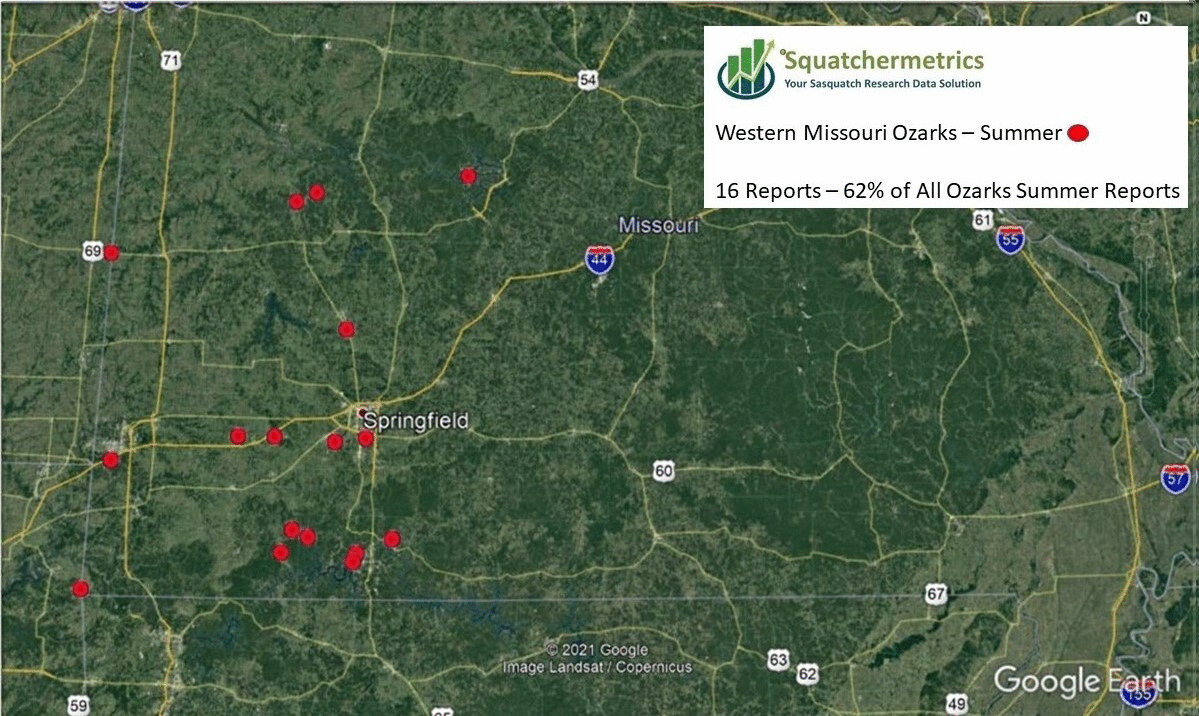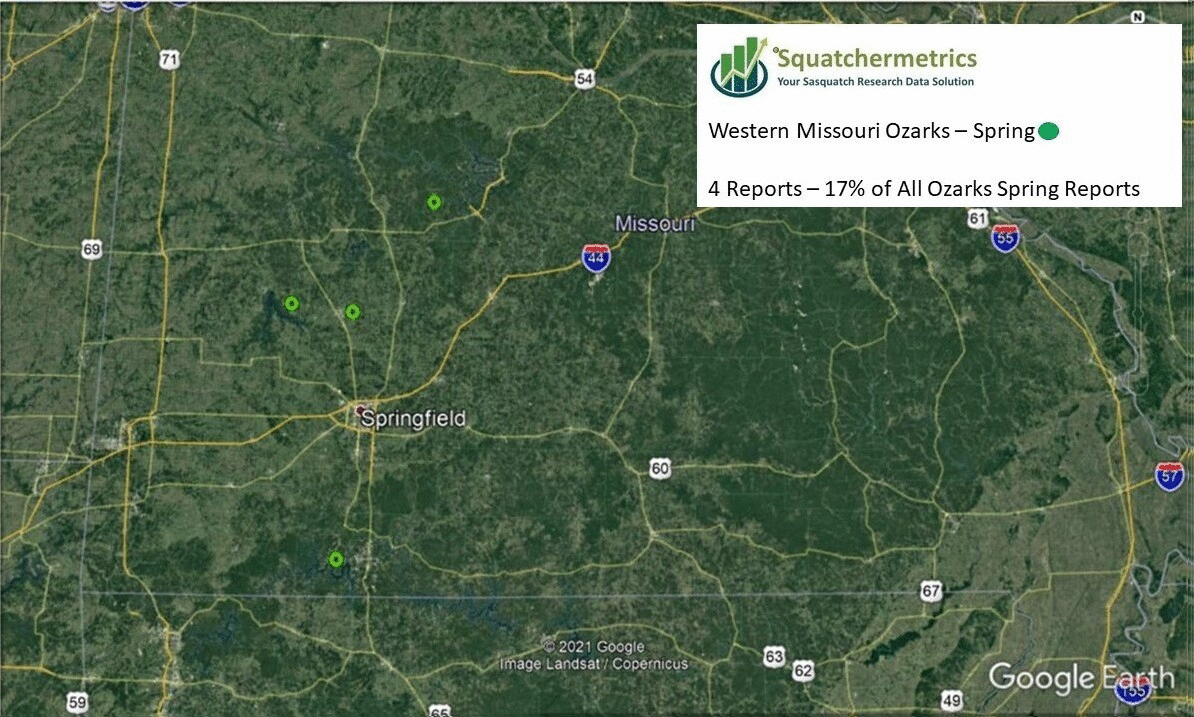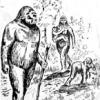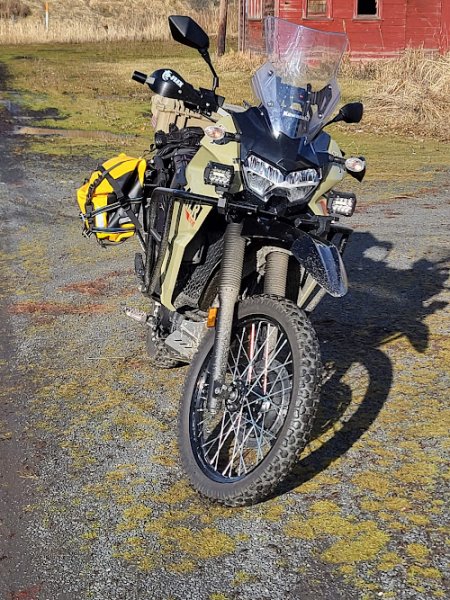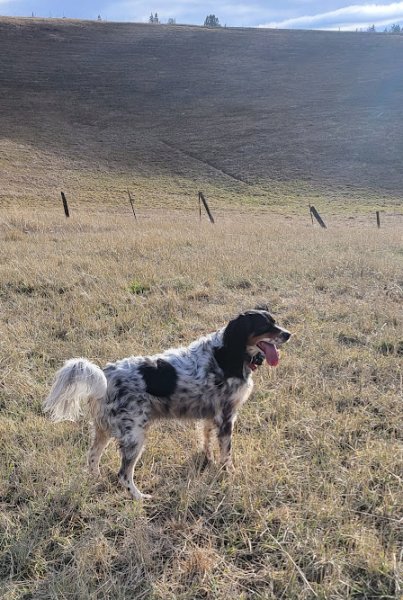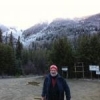Leaderboard
Popular Content
Showing content with the highest reputation on 02/01/2023 in all areas
-
In hindsight here i should have overlayed the swings, apologies. I'm swamped with work right now so don't have the time i'm afraid but you should get the jist here. Not the biggest of dataset by any stretch but just about big enough to give a possible insight in to the seasonality of reports in the Ozarks, from East to West. For clarity of East/West, see below. ===== 'Eastern Ozarks' are all reports within the counties of : Crawford Laclede Maries Miller Washington Carter Dent Douglas Howell Oregon Ozark Phelps Pulaski Ripley Shannon Texas Wright Butler Iron Madison Reynolds St. Francois Ste. Genevieve Wayne ===== 'Western Ozarks' are all reports within the counties of : Barry Barton Camden Cedar Christian Dade Dallas Greene Hickory Jasper Lawrence McDonald Newton Polk St. Clair Stone Taney Vernon Webster ===== There is a singular chart/graphic here and hopefully two animated gifs with the east > west seasonal overlays. I created this for a research group down there that were working the area, good people.2 points
-
The hibernation question brings up the extremes of their reported habitat. The farther north and away from tidewater you go, the more hibernation is required. Even if we accept meat caching for winter like modern man (circa 4500 years ago to today), that would mean a semi-hibernation existence in the far north interiors. Not so the coastline. The sea provides year round sustenance.1 point
-
Personal opinion here from a city slicker: I do not think Bigfoot -should it exist- would be any different in most aspects to some ape in a zoo. That is, Bigfoot doesn't hibernate. I could be completely wrong. But, when we need to add more and more unlikely things on the scale to make our theory work, then it probably doesn't work. The truth should generally fall into place as I see it pretty easily. Places that have real winter have the cold to deal with and everything that means. There are not any berries growing. Outdoor food sources are harder to come by. Snow falls. There are tracks of many other animals out there but somehow there are not many or any of Bigfoot. What are the options: 1) Bigfoot does not live in these areas (for the reasons I just listed) or 2) Bigfoot would be one of the only primates who happens to hibernate. Maybe we could even say for Bigfoot to exist in these winter spots Bigfoot would need to defy all expectations of other ape-like known animals and be able to hibernate. How likely should that expectation be?1 point
-
You have to back up and consider all of the assumptions that you've made here. Yes, Ketchum assumed that their cleaning techniques were adequate to remove any human contamination - but as should be clear from Dr. Hart's analysis, that assumption is simply not true (and if it were, her team would be perhaps the only one ever in the history of genetics research to 100% filter out non-target DNA prior to analysis). You're also assuming that these mutations came from the same genome; they may not have at all. As Hart notes on p.37 of his book, the study's supposedly "whole genomes" alleged to be of the same species had wildly different numbers of bases (one of the nuclear sequences was nearly 5 times another!) Contamination from a common source (e.g., a human or even multiple humans working on the project) is certainly possible. I saw elsewhere where you distinguish between "Ketchum's interpretation" and "Ketchum's DNA." Fair enough to an extent. Her interpretation has been proven to be wrong. Her raw sequences, however, are certainly suspect - and seem to show obvious signs (both to Haskell and to me) of not having been produced in the ways that she claims they were (for example, the study doesn't mention how each sample was primed; her later claim that only universal primers were used doesn't seem to match up with the data or the typical protocols of the external labs that were used). Lastly, while these mutations may be rare right now in Genbank, we have to consider Genbank's limitations. There is a current effort (https://www.theguardian.com/science/2023/jan/29/the-human-genome-needs-updating-but-how-do-we-make-it-fair) to get data in from populations that are woefully underrepresented; it may be that these mutations (nor their co-incidence) are that rare at all in a certain human population. The above are just a few reasons why the jury must still be out on any special significance that Haskell's observation might have. Again, I agree with him that it is a fantastic question to investigate, but it cannot even begin to be answered without more (and more trustworthy) data.1 point
-
We do all that work, put in all that time, then as a member and core member of this forums SSR team, i share it in a thread titled 'seasonal migration?' and you reply with that AFTER editing (i'd pay to see what you posted before editing) ? Seriously ? Beyond this, you're not even worthy of a reply.1 point
-
I agree with snowy weather expeditions as making intuitive sense, problem is many gated roads in the Pacific NW and poor access and more liability for hypothermia, exposure if things head south with a paying crowd. I do not believe in a hibernation theory, I was chased out of an area by an aggressive tree push over, tree snap or something that is good at imitating earthquake and treefall noises. That while trying to access a pinchpoint with snow on the ground in an area with known action that I thought might produce prints after a nightly light snow. Taught me a big lesson if you are accessing steep terrain, have a team approach the pinchpoint from two differing directions or push through the fear and stick to your plan. In my case I was descending a ridge and the ambush was not going to happen the way I had figured and they had me figured out somehow and turned the tables on me. Taught me a big lesson and caused a long detour for me that day. The only thing I succeeded in capturing in the way of prints in the snow that year was black bear. Not even the black bear truly hibernate in my neck of the woods (southern appalachians) they just go through periods of cyclical torpor and forage under oak trees in the snow at times (when we have snow on my side of the mtns). @BobbyO anything of substance from the archives would be cool!1 point
-
Hey, good to see you on here again. I've been absent for quite a while. I do want to caution you on "running" with Haskell Hart's hypothesis, as you're going far further than he would with it. Kudos to him for finding something potentially salvageable in the Ketchum, et al, data - BUT there are (as he himself says) a number of possible explanations for how those mutations could all have shown up in that study's data, including explanations that have nothing to do with Sasquatch. His point, and it is an excellent one, is that it is worth looking for these mutations in future studies because they MIGHT be related to Sasquatch. I plan to look for these same markers in my upcoming study. I think that Haskell Hart raises a great question, but until there is more data from another source than the Ketchum, et al study, it is simply a worthy question to investigate, not a conclusion to assume is correct. (I've discussed with Haskell and this is also how he saw it.)1 point
-
Great weather here on the Idaho/Washington border! Took my KLR for a ride out to check on my dad who is having some weird neurological issues after he got his 4th Covid shot. His homestead was the site of an infamous Bigfoot sighting a couple of years ago. He is a staunch disbeliever in BF. He is currently having some health issues, so I have been going out to his place daily to let his bird dog, Norm, get some exercise. Dad is in pretty bad shape and looking to re-home Norm. He's a 4 year old English Setter professionally trained by a guy in Cheney, WA that has trained a few national champion dogs. Over $3k in training invested in Norm. Sweet dog, but very active and not a good fit for an 80 yr old man who can no longer bird hunt. Weird weather out here. 40's and sunny during the day, then nasty cold and weather overnight. I want to get into the woods and looks for tracks, but still lots of snow in the mountains.1 point
-
I'm a little late getting my report up for Saturday's outing, as I was pretty tired on Sunday from my (mis)adventure. I wasn't able to get anyone to come along for the day, so I planned a brief afternoon solo trip up Mt Murdo, about 30 minutes from home, as I could see there was snow at the upper level, making for good track spotting. The trip up from the main FSR was steep, but fairly smooth and easy. At the point where there's a nice saddle between adjacent peaks, I encountered snow, with tire ruts continuing over the saddle and down into the creek gorge and up the other side a couple of km further on. I drove over the saddle into the north facing slope of the gorge, and the snow got deeper, but not touching the undercarriage. I could see there was less snow on the other, south facing, side of the valley, so I figured I'd continue over there, then turn around and head back out. I dropped into the valley to the bridge across the creek, and spun out climbing the slope on the far side of the bridge. I took a couple of runs at it, then decided to call it done and back across the bridge and try to turn around on the other side to go back up the north side of the valley. I didn't even make it all the way back across the bridge before the truck high centered on the snow, and refused to move forward or reverse. OK, I'm equipped for this. I got the traction boards and shovel down off the roof rack and worked at the rear tires to get the tip of the boards under the tire tread. I found it tough going, as the temp had dropped to -2C as the wind picked up at about 4:30, with the sun now behind the ridge. The snow was very hard, with a thick crust of ice, making digging very slow. I tried to get the rear tires to bite on the boards, but they couldn't get enough grip to start climbing them, So I got going with the shovel again and tried to get the boards further under the tires. It was now 5:30, dark, and the wind was really blowing hard down the creek gulch, so even in my good winter jacket, gloves, and toque I could only work out there for 10 minutes at a time before I had to warm up in the truck again. Now it was time to call for help. I turned on my Zoleo, paired it to the cell phone, and texted my son. I knew his 4x4 was down for repairs (broken front coil spring), so I asked him to go online to BC 4x4 rescue and recovery, a regional volunteer group I belong to, to give them my location and circumstances. He had trouble getting on their website, and asked my daughter for help. She also had difficulties, so she called the forum contact number, and got the owner of the site on the phone. He said he'd organize some help and keep me informed. In short order I got texts from a fellow in Coquitlam, a little over an hour away, and one from the forum boss, Chris, who said he was in Squamish, over 3 hours away, but was heading to Vancouver anyway, so would continue towards me until he knew I was out and safe. Knowing help was on the way was reassuring, so I got back to try to self extract. I put my chains on, and dug a bit more to get the boards far enough under the tread to get some traction. That actually worked, getting me about a truck length further back across the bridge, but one of the chains came loose and wrapped around the left rear axle, so I now had to clear that mess before I could move again. I was on my back half under the rear of the truck, trying to find the hook to open the inside chain circle, when Andrew, the fellow from Coquitlam arrived, in his diesel Colorado with a winch, YAY! It was now 8:30, and I was getting pretty tired, but Andrew scooted under the truck and found the release hook in less than 2 minutes, and we worked out our plan. My H3 was still high centered and stuck, so he pulled out his winch line, and a couple of straps to extend the pull, so he could be as far away from the crusty mess I was stuck in as possible. Once rigged up to the D ring on my rear bumper, he slowly winched me up the hill from the bridge about 80', then unhooked, and we both slowly backed up the ruts in the snow towards the top of the saddle, He got out of the ruts at one point, and had to use my truck as an anchor to pull himself back into the track. After about a km of reversing in the ruts, we reached a spot where the snow was shallow enough and the road wide enough to make a 3 point turn, and we were free and on our way down! About 2 km from the main FSR, we met Chis coming up the mountain, even though I had texted that we were out and safe. He turned around and followed us down to the paved road, where we stopped to chat. I thanked them profusely for their epic effort to help an old guy, and offered gas money and dinner, which they both refused. They left for their homes, and I stopped for a few minutes to make some calls to family that I was now safe and headed home, then got out of the truck for a quick check for damage and to have a pee, when 2 RCMP cruisers pulled up, boxing me in, wanting to know what i was up to out there at almost midnight. After hearing my tale, and checking my ID, they left, and I finally got to maker the final 30 minute drive home. I spent all day Sunday resting my aching body and putting all my gear back in place in the H3. The only tracks I saw in the snow were human and canid.0 points
-
-1 points
This leaderboard is set to New York/GMT-05:00




.thumb.jpg.3156ad4e0db144fdc2df4177158cac30.jpg)
